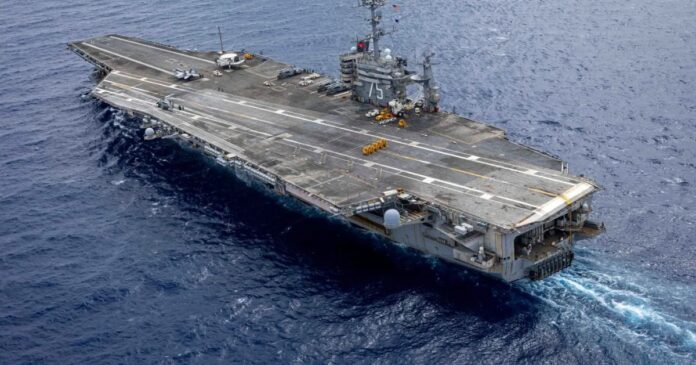The USS Harry S. Truman is one of the strongest aircraft carriers in the United States Navy. It is a Nimitz-class supercarrier, and it has been named after the 33rd President of the United States. The warship acts as a mobile airbase and has the ability to launch and recover planes from any part of the oceans across the world.
Recent Accidents in the Red Sea
In recent times, the USS Harry S. Truman has been in the news not for its might, but for two catastrophic aviation accidents. On May 6, 2025, a F/A-18F Super Hornet crashed into the Red Sea following a botched landing. Just 8 days before this incident another fighter aircraft had also plunged into the sea.
Details of the May 6 Incident
The crash happened on May 6 and it took place at approximately 9:45 local time. The plane suffered a “failed arrestment,” a U.S. official explained, in which the jet’s tail hook did not catch the arresting wire designed to bring the plane to a halt upon landing. The jet then sped off the flight deck and sank into the water.
Both pilots ejected safely and suffered only minor injuries. The U.S. Navy has initiated an official probe to find out precisely what went wrong.
Also read: Tragic Crash in Kansas Claims Lives of Teen Basketball Players and Coach
The April 28 Mishap
Just a week before that, on April 28, another Super Hornet that’s a F/A-18E, which cost $67 million also went into the sea. But here, the plane was not in flight. It was being towed in the hangar bay when the towing crew lost control, and both the plane and the towing vehicle went off the ship and into the Red Sea.
This too is being actively investigated by Navy officials.
Rising Safety Concerns
Double crashes of airplanes are uncommon, particularly on a well-maintained supercarrier like the Harry S. Truman. The crashes have caused worry regarding operational safety, equipment upkeep, and procedures of personnel aboard the ship.
Any slipup for a vessel that has more than 5,000 staff members and more than one sophisticated airplane can result in serious harm.
The Strategic Role of the Truman
In spite of recent failures, the USS Harry S. Truman continues to be one of the main pillars of American naval strength. It is crucial in extending the American military presence in hot spots such as the Middle East and the Mediterranean Sea. Its capacity to attack from the sea makes it one of the most strategically valuable assets within the Navy.
A Reminder of High-Stakes Operations
These recent incidents remind us that naval aviation is risky, even with the latest technology. Each launch, landing, and movement requires perfect coordination. The Navy will now make efforts to rectify any failure and avoid future accidents.
Conclusion: Lessons from the Sea
The USS Harry S. Truman will go on with its mission, but this time with lessons learned the hard way. These accidents, much as they are concerning, are chances to improve safety and readiness on one of the world’s most formidable warships.








